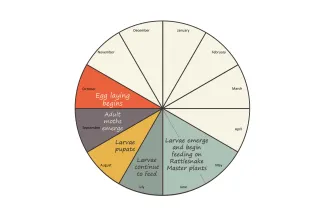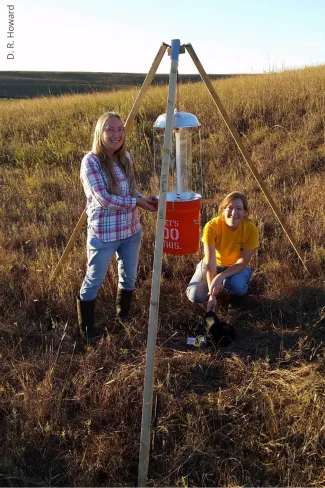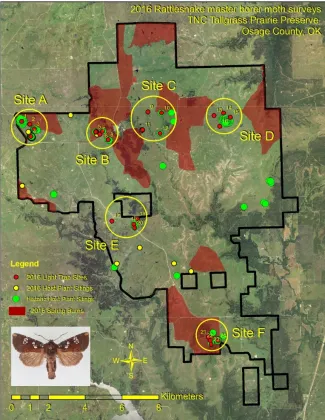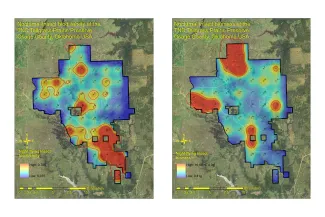Rattlesnake master borers, night-flying insects, are thought to inhabit large, undisturbed areas of prairie and woodlands. Active from May to October, these moths rely on a single plant, rattlesnake master.
Adult moths mate and lay eggs in the fall. After overwintering, the larvae emerge in late spring and begin feeding exclusively on rattlesnake master plants throughout the summer. After this intense foraging session, the individual host plants are unable to flower and may struggle to survive.

Surveying the Tallgrass Prairie

Light traps were set at 50 sites in the Joseph H. Williams Tallgrass Prairie Preserve to capture night-flying insects. (D. R. Howard)
Field surveys were conducted in September and October 2015 and 2016 to determine the abundance and distribution of the moth and its host plant across the Preserve. Specialized ultraviolet light traps were deployed at 50 sampling sites for three consecutive nights in the first year of the study and at 24 sample sites in regions with high abundances of the host plant in the second year, with all insects attracted to the traps being collected to determine the insect diversity and biomass present at the site. Rattlesnake master plants were also examined for potential larval bore holes.

Although no rattlesnake master borer moths were found, several other night-flying insects were. Multiple new county moth records and one state moth record were documented at the site.
Even without the rattlesnake master borer moth, the Joseph H. Williams Tallgrass Prairie Preserve remains a biological hotspot for other nocturnal insects, including species of greatest conservation need like the American burying beetle and prairie mole cricket. The following maps show hotspots of nocturnal insect biodiversity and biomass at the study site.

Financial support for this publication was provided by the Oklahoma Department of Wildlife Conservation through the State Wildlife Grants Program Grant (F14AF01228) and by the University of New Hampshire.